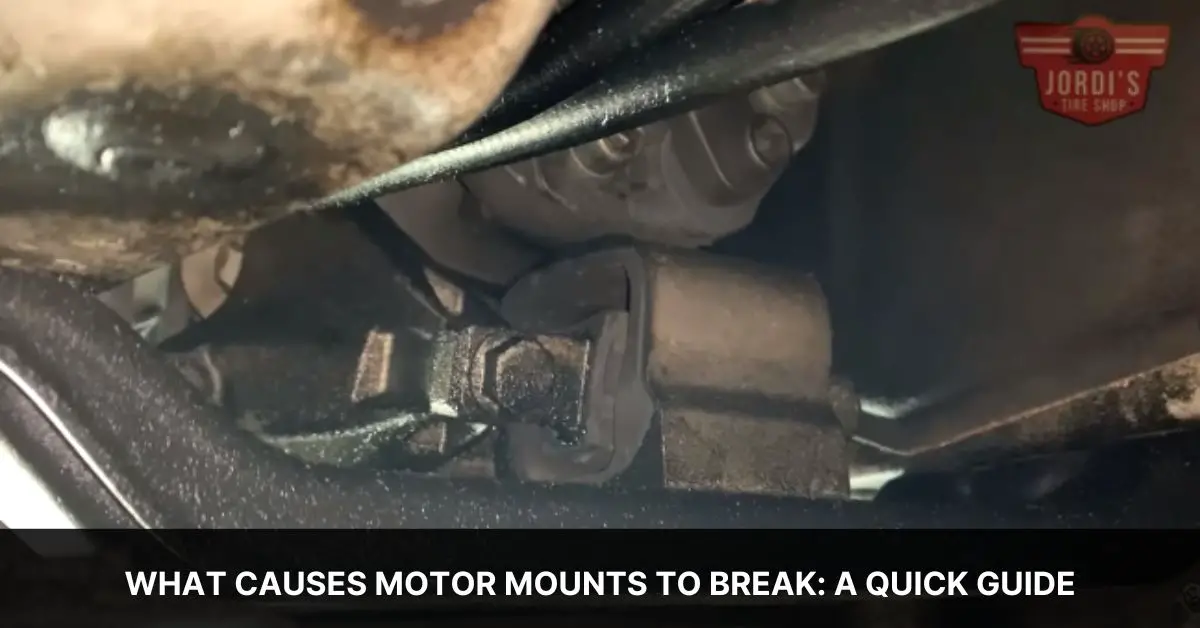Ever wondered why your motor mounts break more often than they should? You’re not alone. Motor mounts are designed to last, but sometimes they don’t. The culprit? Stress. High stress situations like hitting a raised railroad crossing at speed, or even excessive engine vibration can cause these crucial components to fail prematurely.
But there’s more to it than just stress. Incorrect installation, using aftermarket parts, or even a bent frame can also contribute to early motor mount failure. It’s a complex issue with a myriad of potential causes. Let’s investigate into the industry of motor mounts and uncover why they might be giving you more trouble than they’re worth.
Understanding Motor Mounts
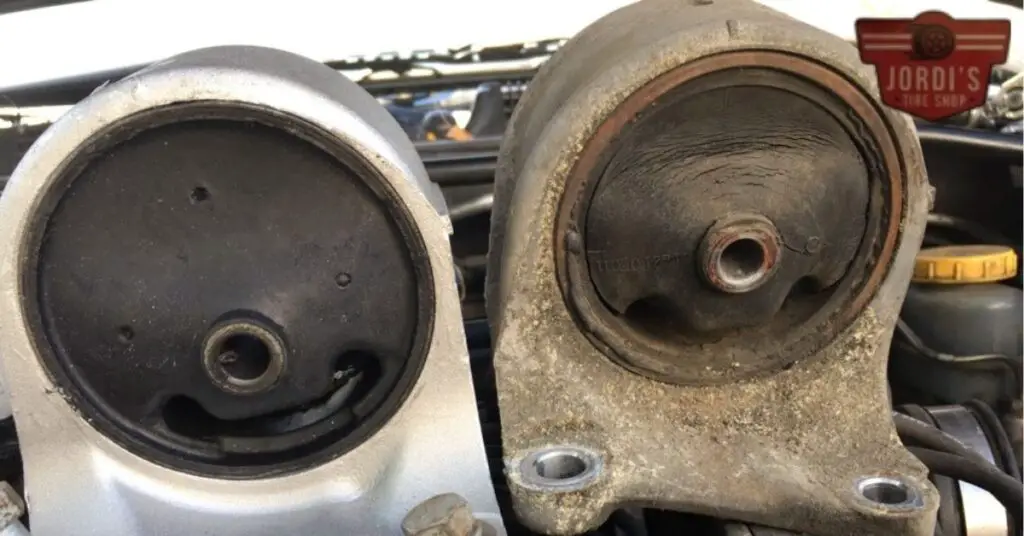
This section uncovers the essentials of motor mounts, discussing their significance in smooth vehicle operation and exploring the different types available.
Role and Function of Motor Mounts
Motor mounts, also known as engine mounts, are essentially rubber or hydraulic cushions that help the connection between the engine and the vehicle’s frame. Their primary function lies in absorbing and damping vibrations from the engine, preventing excessive noise from permeating the car’s interior. As a result of this crucial connection, motor mounts also play a important part in maintaining alignment among engine components.
These structural components help stabilize the engine, creating a buffer to absorb shocks and vibrations. This functionality contributes directly to a peaceful vehicle ride. Apart from holding the engine in place, motor mounts prevent the intense vibrations from the engine from affecting the rest of the vehicle. If not for them, you’d experience the powerful tremors each time you drive.
Another vital role motor mounts assume is connecting the many parts of your car’s engine and transmission to the chassis. Comprising primarily of steel parts with rubber insulator joints, these joints aid in dispelling and absorbing noise and vibrations emanating from the transmission and the engine.
Types of Motor Mounts
A variety of motor mounts are available, specifically designed to complement different vehicle models and engine types. Among these, rubber, hydraulic, and active mounts are most commonly prevalent.
Rubber Mounts derive their popularity from their standard presence in most vehicles. Rubber’s property to naturally absorb shock grants these mounts the adaptability to withstand stress and deliver smooth performance.
Hydraulic Mounts, often seen in larger, more powerful engines, employ hydraulic fluid within the mount. This aids in absorbing vibrations and reducing engine noise more effectively.
Active Mounts, facilitated by electronic sensors to monitor engine vibrations, adjust the stiffness to enhance vibration control actively. These are typically paired with high-performance vehicles.
Just remember, checking the condition of your motor mounts is crucial as they age. Rubber used in mounts can break down and dry out over time, leading to hardening and cracking. This can then cause the rubber to detach from the metal, providing room for unwelcome engine movement. Hence, be proactive and ensure your vehicle’s motor mounts are in optimal condition.
Identifying the Causes of Motor Mount Breakage
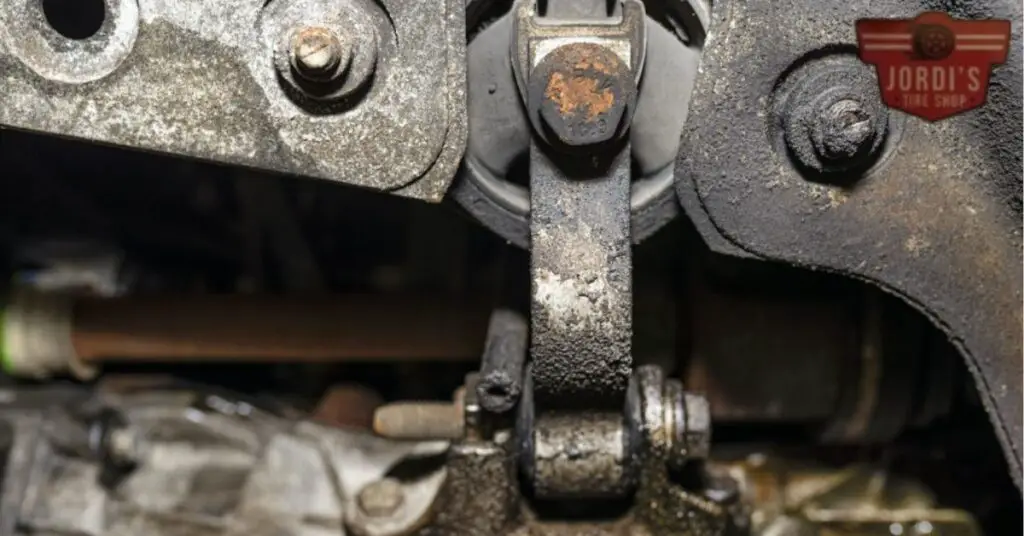
This section navigates the common reasons leading to the breakage of motor mounts in vehicles. It discusses several factors, from installation errors to external circumstances, which can potentially shorten the lifespan of your engine’s mountings.
Effect of Improper Installation
Errors during the installation phase can be a important factor in motor mounts breakage. For instance, if the engine mounts are not correctly positioned, stress is placed on one of the mounts, leading to an early break. It’s crucial to ascertain the proper installation of the new mounts to eliminate the possibility of premature failure due to misalignment or uneven pressure distribution.
Impact of Worn or Defective Mounts
Another leading cause of motor mount breakage is the continual use of worn or defective mounts. You may replace exact mounts while neglecting others, causing an imbalance. This imbalance may instigate undue vibration, placing more stress on the newly installed mounts and leading to their breakage as well. Hence, a systematic replacement strategy is helpful in achieving balanced engine mount health.
Age and Stress as Factors
With age and stress, motor mounts naturally deteriorate. High-stress situations, such as speeding over a raised railroad crossing, can cause excessive strain resulting in breakage. Similarly, heightened engine vibrations due to aging mounts could also lead to their eventual failure. Regular inspection and timely replacement can mitigate the hazards associated with aged and stressed mounts.
Influence of Driving Style
How you handle your vehicle plays a fundamental role in the durability of motor mounts. High-impact commuting, including hard acceleration, burnouts, and quick gear changes for manual transmissions, imparts additional stress on the mounts, inducing premature failure. A tempered driving style can extend the life of your engine mounts.
Consequence of Accidents and Collisions
Further, motor mounts can get damaged in car accidents and substantial collisions, causing the frame or unibody to bend. Such deformation puts extra stress on the engine mounts, leading to possible breakage. Hence, post-accident vehicle evaluations should include a comprehensive examination of the motor mounts to ensure structural integrity.
Role of Oil and Fluid Leaks
Finally, motor mounts failure could be instigated by oil and other fluid leaks from the vehicle. Substances like oil could erode the rubber constituting the mounts, sanctioning an accelerated degradation process. In such cases, immediate attention to leakages can prevent potential motor mount failure.
Understanding these causative factors allows for effective preventative and corrective actions, promoting longer motor mount life and maintaining the overall health of your vehicle’s engine.
Symptoms of a Bad Motor Mount
Bad motor mounts exhibit several symptoms, indicating their compromised condition. Monitoring these signs can help prevent the escalation of minor issues into major repair cases. Understanding these symptoms helps you optimize your vehicle’s performance and longevity. Let’s further explore these signs.
Observing Unusual Vibrations
One symptom of motor mount failure is an unusual increase in vibrations. A google-performing motor mount significantly reduces vibration from the engine. If it begins to deteriorate, it loses this capacity. You might notice a strange vibration coming from your engine, especially when accelerating, making hard corners, or braking rapidly. In an operating motor vehicle, engine vibration should be minimal. Excessive vibration, hence, poses a clear sign of a defective motor mount.
Understanding Louder Engine Noises
An increase in engine noise signals a potential issue with your motor mounts. The mounts should secure your engine and help muffle its operational noise. If these mounts are worn out or damaged, there would be a notable increase in noise. This would present as loud clunking or rattling sounds originating from under the hood. Amplication of these noises occurs when components shift or rub against each other during acceleration and deceleration.
Deciphering Rough Start and Shaky Movement
Motor mounts play a crucial role in maintaining engine steadiness. A damaged mount may fail to hold the engine firmly, leading to rough starts and shaky movement. This symptom becomes pronounced over time—your engine may shift, lean, or sag under load. You might even observe the engine moving sideways or vertically when driving aggressively or braking quickly.
Noticing Physical Damage or Wear
A direct way to identify a bad motor mount involves visual inspection. Look for signs of physical damage or wear, like visible cracking or tearing on the mount. Over time, exposure to harsh operating conditions can wear down the rubber cushioning part of your motor mounts. When this rubber breaks down or turns brittle, your mount’s ability to provide optimal noise and vibration insulation diminishes. So, moving parts may come close to each other, leading to direct metal-on-metal contact, which you might hear as a mimic of an engine knock.
The Implications of a Broken Motor Mount
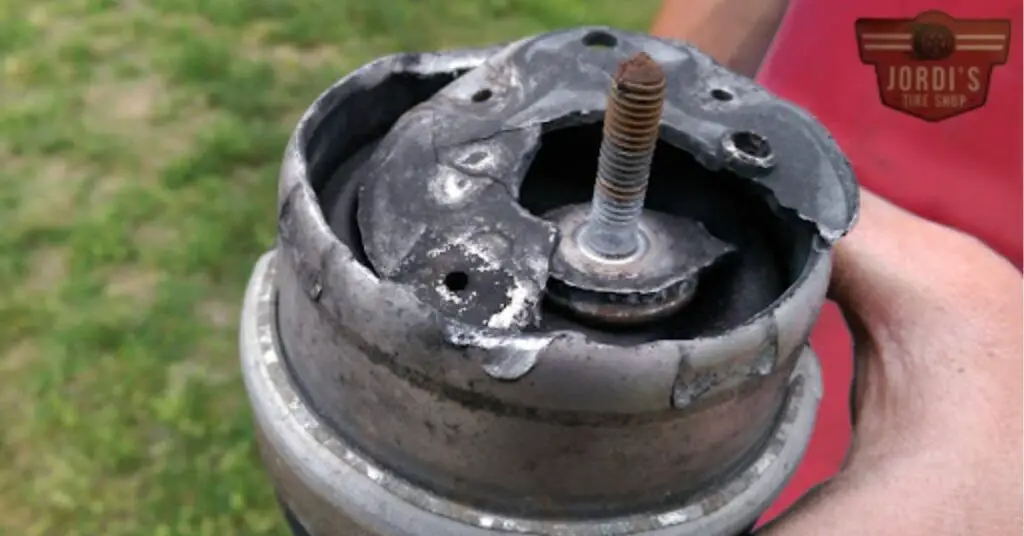
Continuing our exploration of motor mounts, let’s dive deeper into the repercussions of a broken motor mount. A dysfunctional mount can wreak havoc on your vehicle’s overall performance and potentially drain your pockets with unforeseen repair costs.
Impact on Engine Alignment
One prime function of motor mounts is to stabilize your vehicle’s engine, ensuring its alignment. If your mounts are not functioning properly, it’s not uncommon for the engine to sag or deviate in positioning. A mere visual check under the hood can help identify this issue. An engine with an extreme tilt indicates badly affected mounts and necessitates immediate attention to prevent the worst-case scenario – an engine block, resulting in your car coming to an unexpected halt.
Potential for Engine Damage
Ignoring a failing motor mount can lead down a destructive path. A loose engine, allowed to bounce around, potentially contacts other vehicle components, causing harm to not only itself but also those essential parts. Further damaging effects are the deterioration and ultimate failure of the mounts, magnifying repair costs exponentially. Unattended, poor mounts evolve into a predicament that requires more than a simple mount replacement, often leading to hefty repair bills.
The Risk to Hoses and Belts
Interestingly, damaged motor mounts can pose a threat to seemingly unrelated components within your vehicle—hoses and belts. In movements instigated by a high-speed ride, the engine may shift fiercely. This abrupt movement can lead to damaged radiator hoses and fan belts. Hence, maintaining healthy motor mounts is not just about preserving the engine but is also constructive in upkeeping other critical components of your car.
Addressing a Broken Motor Mount
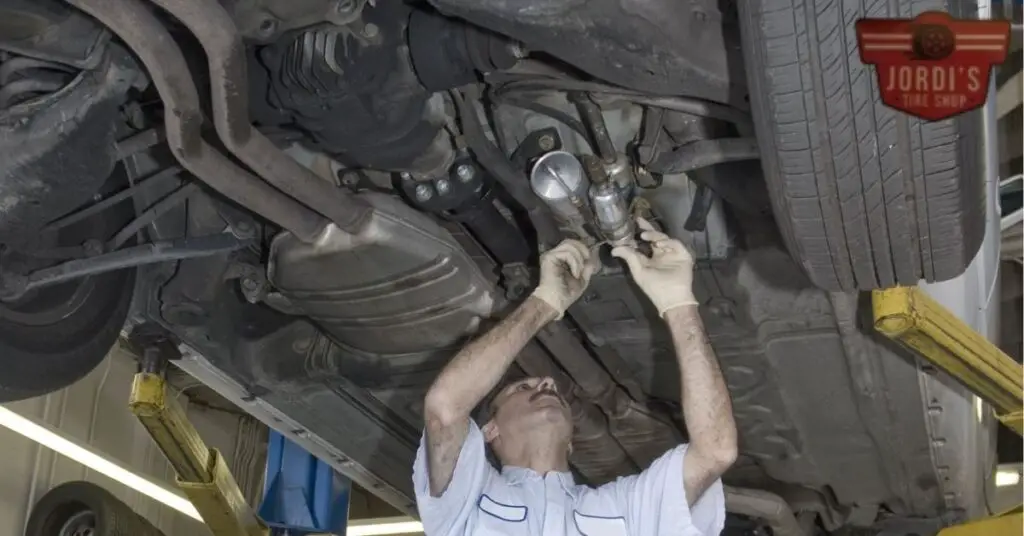
Having addressed the causes and signs of a broken motor mount, it’s time now to focus on dealing with this problem. Rather than ignoring or postponing, let’s focus on finding the right solution.
Professional Diagnosis and Finding the Right Mechanic
A professional diagnosis plays a crucial role in addressing motor mount issues. It’s vital to approach a seasoned mechanic who is adept at diagnosing and rectifying motor mount problems. When trying to identify the right mechanic, focus on the following guidelines:
- Certifications: Make certain to approach ASE-certified mechanics. They bring a seal of assurance with their services.
- Specialization: Opt for a mechanic who has considerable experience with your car’s make and model. They’ll have a superior understanding of the system.
- Reputation: Validate their reputation by checking reviews and ratings on reputed platforms like the Better Business Bureau (BBB). Chances are higher that you’ll get quality service from one high in business ethics and customer satisfaction.
For more resources on this, you can refer to the Automotive Service Association.
Costs Involved in Motor Mount Replacement
When a motor mount breaks, replacement is the only solution, and for this, you’ve to bear some costs. Broadly, the expenses you may incur can be summarized as follows:
| Vehicle Type | Average Cost |
|---|---|
| Economy Cars | $200 – $350 |
| Mid-Range Cars | $350 – $550 |
| High-end Cars | $550 – $750 |
For a more detailed explanation, see the RepairPal survey on motor mount replacement costs here. Please note that the actual cost may vary based on the locality, mechanic’s labor charges, and exact car model.
Proactive Measures and Maintenance
Proactive measures and routine maintenance can prevent the unnecessary wear and tear of motor mounts. Regular inspections aid in detecting early signs of damage, limiting the possibility of substantial repairs. Replace the broken or worn-out mounts as soon as possible to avoid further damage to your car or costly replacements. Remember, each motor mount plays a crucial role in the car’s overall performance; neglecting even one can lead to a chain of issues causing severe vehicle damage. Handling them with care can ensure optimal vehicle health and performance.
Conclusion
After understanding the role and types of motor mounts, you’ve seen how various factors can cause them to break. Factors like high-impact stress, improper installation, and the use of aftermarket parts, coupled with natural wear and tear, can lead to premature motor mount failure. It’s clear that regular checks and maintenance are crucial to prevent such issues.
You’ve also learned to recognize the symptoms of failing motor mounts, such as unusual vibrations and increased engine noise. Ignoring these signs can lead to more serious problems, including engine misalignment and increased repair costs.
The importance of professional help can’t be stressed enough when dealing with broken motor mounts. A qualified mechanic can correctly diagnose and fix the problem, saving you from potential headaches down the line. Finally, remember that proactive measures and timely replacements are your best defense against unnecessary wear and tear on your motor mounts, ensuring your vehicle’s optimal health and performance.
Related Posts:

